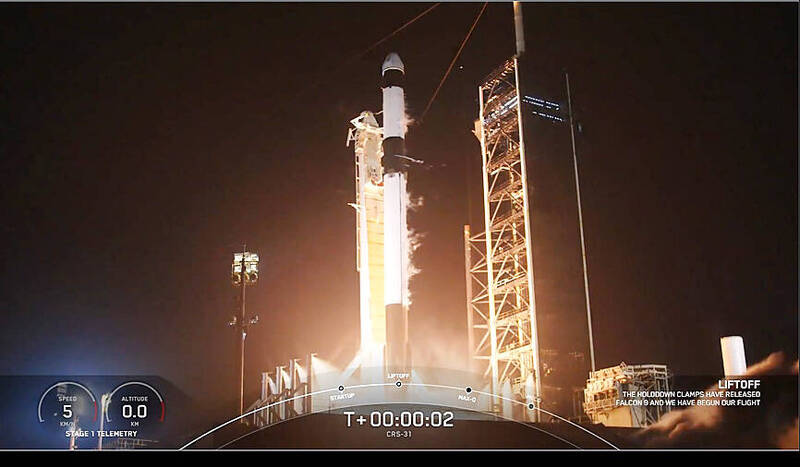《TAIPEI TIMES》 Space agency celebrates ‘pineapple’ satellite launch

Onglaisat, aboard a SpaceX Falcon 9 rocket, is launched into space from Cape Canaveral, Florida, yesterday. Photo courtesy of the Taiwan Space Agency
JOINT EFFORTS: The satellite was named in 2021, when Taiwan was seeking to expand its pineapple exports following a Chinese ban, an official said
/ Staff writer, with CNA
Onglaisat, a satellite codeveloped by Taiwan and Japan, was successfully launched into space on Monday aboard a SpaceX Falcon 9 rocket, the Taiwan Space Agency (TASA) said yesterday.
The cube satellite, or cubesat, is scheduled to reach the International Space Station and be deployed into a 410km low Earth orbit in about one month to begin its test mission, the agency said in a statement.
During the six-month mission, Onglaisat would be used to validate the key technologies of a newly developed remote sensing system, said the agency, which is part of the National Science and Technology Council.
Onglaisat, which was launched aboard SpaceX’s CRS-31 resupply mission from Cape Canaveral, Florida, would test high-resolution data collection and image compression technologies it developed in collaboration with the Taiwan Semiconductor Research Institute, the agency said.
The small satellite would achieve a ground image resolution of 2.8m, surpassing the typical resolution of 5m to 6m for satellites of the same class, said Chan Chen-yu (詹鎮宇), the project’s leader.
The satellite, codeveloped by TASA and the Intelligent Space Systems Laboratory at the University of Tokyo’s Department of Aeronautics and Astronautics, along with several start-ups, also offers a valuable opportunity for scientific exchange and study, Chan said.
“Onglai” is a Hoklo (commonly known as Taiwanese) word that symbolizes aspirations for joint efforts between the two countries in space, he said.
The name means “prosperity” and “pineapple,” reflecting the launch, and hope for an enduring friendship and collaboration between Taiwan and Japan, he said.
The satellite was named in 2021, when Taiwan was seeking to expand its pineapple exports following a ban by China on the fruit from Taiwan, Chan said.
Japan showed strong support by purchasing large quantities, a gesture that resonated deeply with many Taiwanese, he added.
新聞來源:TAIPEI TIMES



















